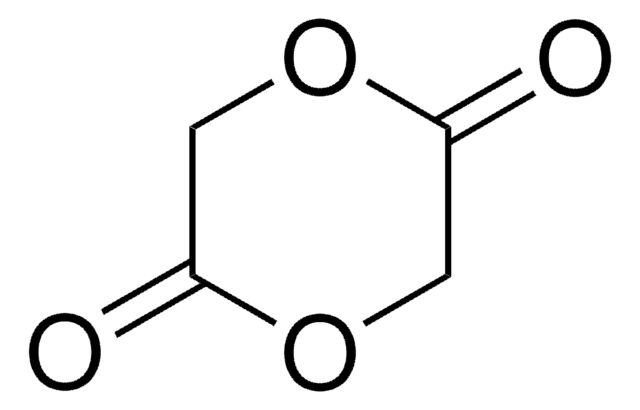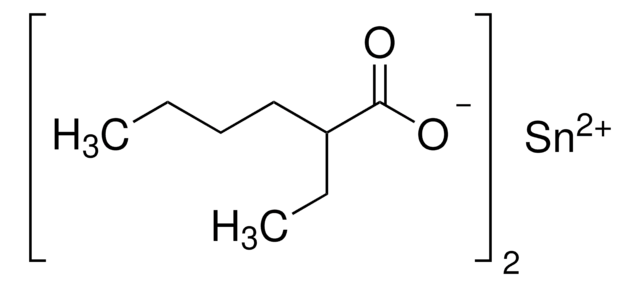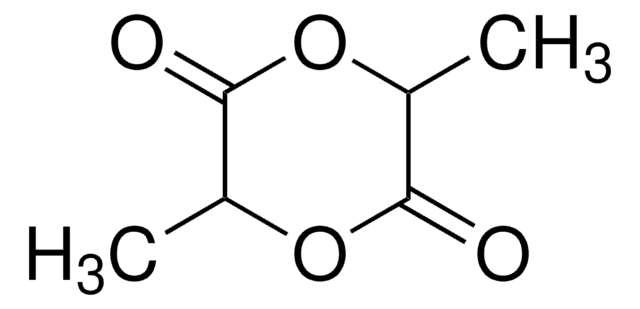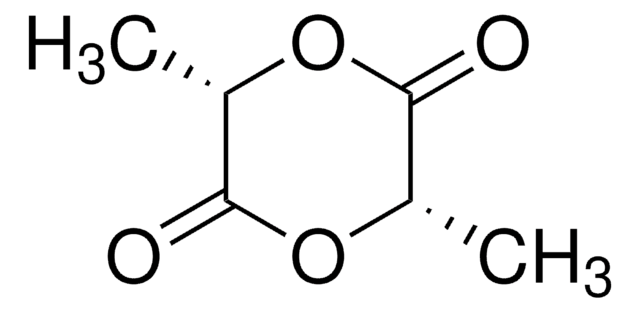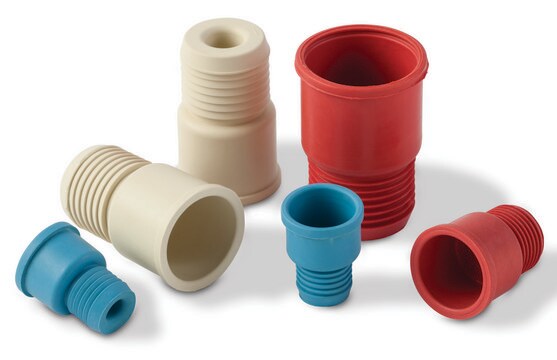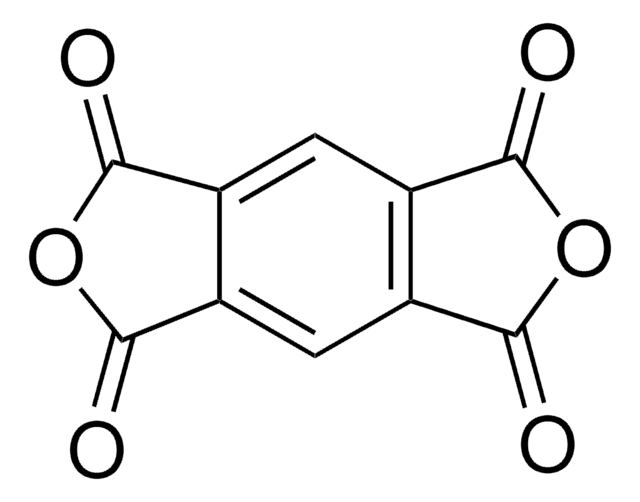推荐产品
應用
3-Methylglycolide (MG) is a six-member lactone consisting of one lactyl unit (L) and one glycolyl unit (G), it is used for the synthesis of poly (lactic-co-glycolic acid) (PLGA) polymer. Polymerization of MG follows the same mechanism as that of glycolide (GA) and Lactide (LA), and the resulting polymers possess the exact alternative sequence of glycolide (GA) and Lactide (LA). PLGA based polymers made from MG perfectly avoid the drawback of structure with long glycolic blocks, exhibit excellent solubility in common organic solvents, such as acetonitrile, acetone, dioxane, DCM and THF, thus solve the long-time headache of insolubility and discoloration issues of PLGA based polymers, providing great convenience for drug delivery researches and applications.
Poly(lactic-co-glycolic acid) (PLGA) is a biocompatible and biodegradable polymer that has been approved by the FDA for biomedical and pharmaceutical applications. PLGA based polymers can be synthesized from copolymerization of glycolide (GA) and lactide (LA), and PLGAs that comprise up to a 1:1 ratio of lactic to glycolic units are of practical interest. However, the copolymerization of glycolide (GA) and Lactide (LA) typically results in broad composition ranges and a random block nature because of the much higher reactivity of GA and the drastic polymerization conditions. Thus, simple use of equimolar charges of GA and LA results in polymers containing longer glycolic blocks. This adversely affects the solubility and PDI of the copolymer. Melt copolymerization of GA and LA has often been used to prepare PLGA with high glycolic content. Under these conditions, in situ transesterification of the polymer both randomizes the sequence and broadens the distribution, as well as significant discoloration of the resulting PLGA copolymer
Poly(lactic-co-glycolic acid) (PLGA) is a biocompatible and biodegradable polymer that has been approved by the FDA for biomedical and pharmaceutical applications. PLGA based polymers can be synthesized from copolymerization of glycolide (GA) and lactide (LA), and PLGAs that comprise up to a 1:1 ratio of lactic to glycolic units are of practical interest. However, the copolymerization of glycolide (GA) and Lactide (LA) typically results in broad composition ranges and a random block nature because of the much higher reactivity of GA and the drastic polymerization conditions. Thus, simple use of equimolar charges of GA and LA results in polymers containing longer glycolic blocks. This adversely affects the solubility and PDI of the copolymer. Melt copolymerization of GA and LA has often been used to prepare PLGA with high glycolic content. Under these conditions, in situ transesterification of the polymer both randomizes the sequence and broadens the distribution, as well as significant discoloration of the resulting PLGA copolymer
訊號詞
Warning
危險聲明
危險分類
Eye Irrit. 2
儲存類別代碼
11 - Combustible Solids
水污染物質分類(WGK)
WGK 3
閃點(°F)
Not applicable
閃點(°C)
Not applicable
Synthesis of O-(2′-Bromopropionyl)glycolic Acid and Its Polymerization: Synthesis of an Alternating Lactic and Glycolic Acid Copolymer.
Rebert WN
Macromolecules, 27, 5533-5535 (1994)
Lin Yu et al.
Biomacromolecules, 12(4), 1290-1297 (2011-03-03)
This paper reports the influence of sequence structures of block copolymers composed of poly(lactic acid-co-glycolic acid) (PLGA) and poly(ethylene glycol) (PEG) on their thermogelling aqueous behaviors. A series of thermogelling PLGA-PEG-PLGA triblock copolymers with similar chemical compositions and block lengths
我们的科学家团队拥有各种研究领域经验,包括生命科学、材料科学、化学合成、色谱、分析及许多其他领域.
联系技术服务部门